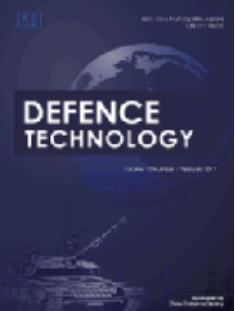A sparse moving array imaging approach for FMCW radar with dual-aperture adaptive azimuth ambiguity suppression and adaptive QR decomposition
IF 5.9
Q1 ENGINEERING, MULTIDISCIPLINARY
引用次数: 0
Abstract
Range-azimuth imaging of ground targets via frequency-modulated continuous wave (FMCW) radar is crucial for effective target detection. However, when the pitch of the moving array constructed during motion exceeds the physical array aperture, azimuth ambiguity occurs, making range-azimuth imaging on a moving platform challenging. To address this issue, we theoretically analyze azimuth ambiguity generation in sparse motion arrays and propose a dual-aperture adaptive processing (DAAP) method for suppressing azimuth ambiguity. This method combines spatial multiple-input multiple-output (MIMO) arrays with sparse motion arrays to achieve high-resolution range-azimuth imaging. In addition, an adaptive QR decomposition denoising method for sparse array signals based on iterative low-rank matrix approximation (LRMA) and regularized QR is proposed to preprocess sparse motion array signals. Simulations and experiments show that on a two-transmitter-four-receiver array, the signal-to-noise ratio (SNR) of the sparse motion array signal after noise suppression via adaptive QR decomposition can exceed 0 dB, and the azimuth ambiguity signal ratio (AASR) can be reduced to below −20 dB.
基于双孔径自适应方位模糊抑制和自适应QR分解的FMCW雷达稀疏运动阵列成像方法
调频连续波(FMCW)雷达对地面目标的距离方位成像是有效探测目标的关键。然而,当运动过程中构造的运动阵列的俯仰超过阵列的物理孔径时,就会出现方位角模糊,这给运动平台上的距离-方位角成像带来了挑战。为了解决这一问题,我们从理论上分析了稀疏运动阵列中方位模糊的产生,并提出了一种双孔径自适应处理(DAAP)方法来抑制方位模糊。该方法将空间多输入多输出(MIMO)阵列与稀疏运动阵列相结合,实现高分辨率距离-方位成像。此外,提出了一种基于迭代低秩矩阵近似(LRMA)和正则化QR的稀疏阵列信号自适应QR分解去噪方法,对稀疏运动阵列信号进行预处理。仿真和实验表明,在双发射-四接收阵列中,稀疏运动阵列信号经过自适应QR分解噪声抑制后的信噪比(SNR)可超过0 dB,方位角模糊信号比(AASR)可降至- 20 dB以下。
本文章由计算机程序翻译,如有差异,请以英文原文为准。
求助全文
约1分钟内获得全文
求助全文
来源期刊

Defence Technology(防务技术)
Mechanical Engineering, Control and Systems Engineering, Industrial and Manufacturing Engineering
CiteScore
8.70
自引率
0.00%
发文量
728
审稿时长
25 days
期刊介绍:
Defence Technology, a peer reviewed journal, is published monthly and aims to become the best international academic exchange platform for the research related to defence technology. It publishes original research papers having direct bearing on defence, with a balanced coverage on analytical, experimental, numerical simulation and applied investigations. It covers various disciplines of science, technology and engineering.
 求助内容:
求助内容: 应助结果提醒方式:
应助结果提醒方式:


